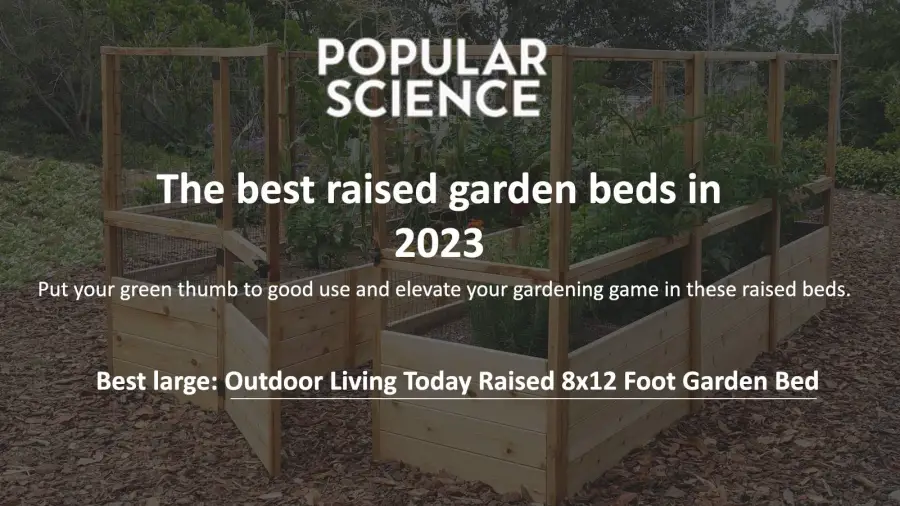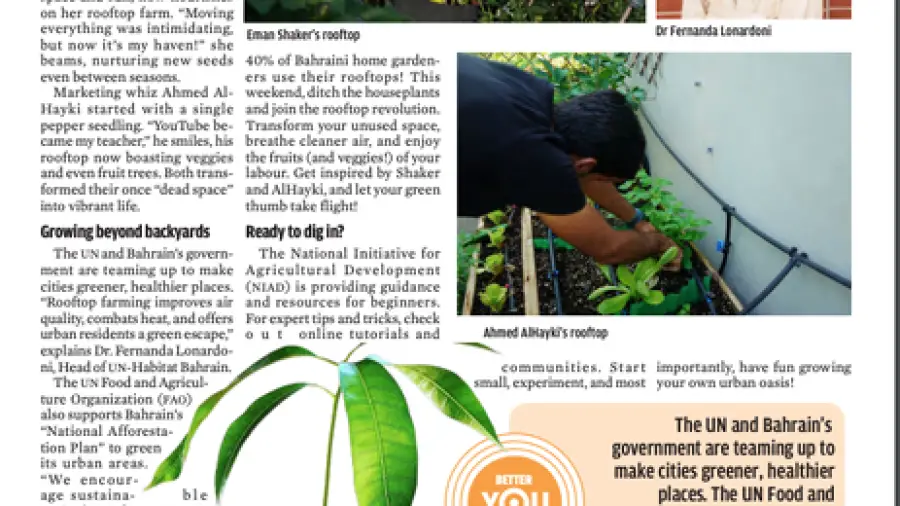Rooftop gardening offers an urban oasis and efficient use of space. Beginners should start small and consider structural capacity.
Rooftop gardening transforms underutilized urban spaces into green havens, providing city dwellers with a chance to engage in gardening despite limited ground space. Perfect for beginners, these elevated gardens not only enhance the aesthetic appeal of buildings but also contribute to environmental sustainability by improving air quality and reducing urban heat islands.
Rooftop Gardening for Beginners: Understanding the fundamentals is crucial: from assessing the rooftop’s load-bearing capacity to selecting suitable plants that thrive in higher elevations with varying weather conditions. Enthusiasts can grow anything from lush foliage and flowers to organic vegetables and herbs, creating a vibrant and productive ecosystem right above their living spaces. By embracing this green initiative, beginners can not only cultivate a hobby but also contribute positively to urban environments.
Table of Contents
The Lure Of Rooftop Gardening
Rooftop gardening turns drab roofs into vibrant spaces. It transforms tall buildings into lush, green sanctuaries. Gardening atop a building brings a slice of nature to the concrete jungle. It creates a personal retreat amid city hustle.
- Refreshing greenery can thrive even in busy cities.
- Residents enjoy a spot of tranquility and escape.
- These gardens invite wildlife, adding to urban biodiversity.
- A rooftop plot can be a source for fresh herbs and vegetables.
Children can find joy in watching plants grow stories above the ground. Families can harvest food right from their rooftops. City dwellers can turn their rooftops into personal oases.
Assessing Your Roof’s Readiness
Before starting a rooftop garden, check the strength of your roof. A professional can tell you if it can hold the garden’s weight. Make sure the surface is free from damage and has proper waterproofing. This step stops leaks and protects your home.
Good access is key for carrying supplies, like soil and plants, to your roof. A sturdy ladder or stairs are a must. Your roof should also have safe railings to prevent falls. Always think about how you will reach your garden safely.
| Aspect | Consideration |
|---|---|
| Structural Integrity | Can the roof support the garden’s weight? |
| Waterproofing | Is there a system to prevent leaks? |
| Access | How will you transport materials? |
| Safety | Are there measures to protect against falls? |
Designing Your Rooftop Garden
Craft your rooftop garden vision by thinking about the skyline view you love. Consider the sun and wind patterns, as plants need these to grow. Choose a theme or color that reflects your personal style. Space utilization is key in rooftop gardening. Use vertical planters and hanging pots to save floor space. Select dual-purpose items, like seating that doubles as storage. Combine beauty with practicality in your rooftop garden design. Use containers that add visual appeal and provide easy access to plants.
The Basics Of Rooftop Planting
Beginning a rooftop garden requires knowing what plants work best up high. Choose drought-tolerant and wind-resistant plants that can endure the unique conditions of a rooftop environment. Succulents, herbs, and certain vegetables thrive in these spaces due to their ability to withstand less water and more sun.
The secret to a healthy rooftop garden lies in the soil and planters. Opt for lightweight and well-draining soil mixtures. Ensure planters have adequate drainage to prevent excess water from harming the plants or building structure.
Plant spacing and arrangement are crucial for growth and accessibility. Create ample space between plants to allow for air circulation and sunlight penetration. Arrange taller plants towards the back to avoid shading smaller ones. Use a varied layout to give your garden an attractive look and feel.
Irrigation Solutions
Creating an urban oasis atop your home? Rooftop gardening for beginners entails selecting the right plants and efficient irrigation solutions to sustain a verdant retreat high above the busy streets. For novices, drip systems or self-watering containers can ensure your rooftop garden thrives without constant attention.
Watering Systems Overview
Efficient watering is vital for rooftop gardens. Set up a drip irrigation system to provide consistent hydration. It’s easy to use and saves water.
A manual watering can works, but it’s more labor-intensive. Automatic timers on watering systems ensure plants receive precise water amounts at needed times.
Conservation Tips For Urban Gardeners
- Collect rainwater to reduce water usage.
- Use mulch to minimize evaporation.
- Plant placement affects water needs.
Maintaining Your Rooftop Garden
Daily care ensures your rooftop garden thrives. Start your morning by checking soil moisture. Use your finger to test if the top inch is dry, then water as needed. Split large tasks into short, manageable daily activities. This preserves plant health and reduces overwhelming workloads.
For pest control, regularly inspect your plants. Remove insects by hand or use organic repellents. Weather challenges like high winds and intense sun require protective measures. Install windbreaks and shade cloths to shelter your garden. Always secure loose pots and tools to prevent damage.
Update your garden as seasons change. Rotate crops to maximize yield and garden health. Plant cool-season crops in fall; warmer-season crops in spring. Add mulch to protect against extreme temperatures. Consult a local planting guide to choose the right plants for the season.
Creative And Sustainable Practices
Rooftop gardening turns city roofs into green spaces. Use recyclable materials like old containers. Choose lightweight options that won’t damage your roof.
Composting and fertilization are key practices. Create rich soil with kitchen scraps. This encourages healthy plant growth.
Learn urban agriculture techniques. Grow food in small spaces. Plant herbs and vegetables that thrive high above the ground. Your rooftop garden will flourish!

Credit: gardenforwildlife.com
The Importance Of Community
Becoming part of a gardening community is key. Interacting with fellow gardeners can spark new ideas and friendships. Many cities host educational workshops, teaching the essentials of rooftop gardening. Gardening events offer a space to explore innovative techniques.
Sharing experiences is just as important as sharing crops. Sharing the harvest with neighbors cultivates a sense of togetherness. It’s a rewarding aspect of urban agriculture, ensuring community bonds grow as strong as the plants. Community gardens often create food exchange programs, where growers can swap produce.
Transforming Challenges Into Opportunities
Rooftop gardens need clever ideas to overcome challenges. For weight limitations, using lightweight materials is key. Containers made from fiberglass or foam work well. Select soil mixes that are less dense but still provide nutrients. This ensures the roof can support your garden.
Space might be scarce, but with vertical planters and hanging pots, you make the most of it. These methods allow more greenery without eating up floor area.
In extreme conditions, pick plants that thrive in harsh environments. Succulents and certain herbs are perfect. They can withstand strong winds and intense sunlight, often found on rooftops.

Credit: greenpointers.com
Enjoying The Fruits Of Your Labor
Gathering ripe fruits and vegetables from your garden brings joy. Pick early in the morning; the taste is best then. Your veggies should snap and herbs should be fragrant when ready. Check plants daily to avoid over-ripeness. When cooking, try simple recipes. Let the flavors of your fresh produce be the star. For parties, pick produce hours before guests arrive. Imagine fresh salads, herbed beverages, and grilled vegetable skewers. Invite friends to pick their own salad greens. It will add fun and talk to your Rooftop Garden Soirees.
Use produce in creative ways: make basil pesto, mint ice cream, or organic fruit jams. Your home-grown treats will impress. Share with neighbors for a sense of community. Remember, patience is key in rooftop gardening, and the rewards are plentiful.
Frequently Asked Questions Of Rooftop Gardening For Beginners
What Plants Are Best For Rooftop Gardens?
Succulents, herbs, grasses, and native prairie plants excel in rooftop garden environments.
What Materials Are Needed For Roof Top Gardening?
Essential materials for rooftop gardening include waterproof membrane, drainage system, geotextile fabric, lightweight soil, and suitable plants.
What Are Some Techniques That Can Be Used For Rooftop Gardening?
Some rooftop gardening techniques include using lightweight containers, ensuring proper drainage, selecting wind-resistant and drought-tolerant plants, incorporating a watering system, and utilizing vertical space for plant support.
How Do You Take Care Of A Rooftop Garden?
Ensure proper waterproofing to prevent leaks. Install adequate drainage to manage water runoff. Choose plants suited for high wind and sun exposure. Regularly check and maintain irrigation systems. Monitor plant health and soil conditions frequently.
Conclusion
Embracing rooftop gardening can be your step towards a greener future. It lets you cultivate a lush haven, even in urban settings. Start small, nurture your green thumb, and watch as your garden thrives. Remember, a successful rooftop oasis is just a plant away.
Happy gardening on your new high-rise retreat!




